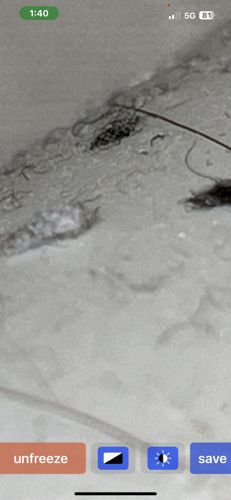Silverfish
Scientific Name: Lepisma saccharina
Order & Family: Order: Zygentoma, Family: Lepismatidae
Size: Typically 10-19 mm (0.4-0.75 inches) long, excluding the tail-like appendages.

Natural Habitat
Silverfish prefer dark, damp, and cool places. Common indoor habitats include basements, attics, bathrooms, kitchens, laundry rooms, and crawl spaces. They can also be found in bookcases, behind baseboards, in closets, and other undisturbed areas where paper or fabric items are stored. Outdoors, they live under rocks, logs, leaf litter, and in bird or ant nests.
Diet & Feeding
Silverfish are omnivores and scavengers. They primarily feed on carbohydrates, particularly polysaccharides, such as starches and dextrin found in adhesives, paper, books, photos, sugar, hair, and dandruff. They can also consume cotton, linen, silk, and synthetic fibers, and may even eat protein-rich foods like dried meat and dead insects.
Behavior Patterns
Silverfish are primarily nocturnal and very secretive, scurrying away quickly when light is introduced. They are wingless and move with a characteristic 'fish-like' wriggling motion. They undergo incomplete metamorphosis, meaning they hatch from eggs as nymphs that resemble smaller versions of the adults, molting many times throughout their long lifespan, which can be several years. They are attracted to damp, dark environments.
Risks & Benefits
Potential Risks: Silverfish are considered household pests. They do not bite or transmit diseases to humans or pets. However, they can cause significant damage to stored goods such as books, documents, photographs, wallpaper, clothing, and food items through their feeding activities. Their presence can also trigger allergies in some sensitive individuals due to their shed skins. Potential Benefits: In natural ecosystems, silverfish play a minor role as decomposers, breaking down organic matter. However, their impact in human dwellings is almost exclusively negative.
Identified on: 9/2/2025